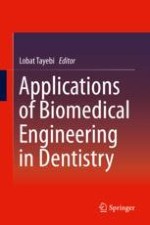2020 | OriginalPaper | Buchkapitel
6. Engineering of Dental Titanium Implants and Their Coating Techniques
verfasst von : Jonathan Wirth, Lobat Tayebi
Erschienen in: Applications of Biomedical Engineering in Dentistry
Aktivieren Sie unsere intelligente Suche, um passende Fachinhalte oder Patente zu finden.
Wählen Sie Textabschnitte aus um mit Künstlicher Intelligenz passenden Patente zu finden. powered by
Markieren Sie Textabschnitte, um KI-gestützt weitere passende Inhalte zu finden. powered by
